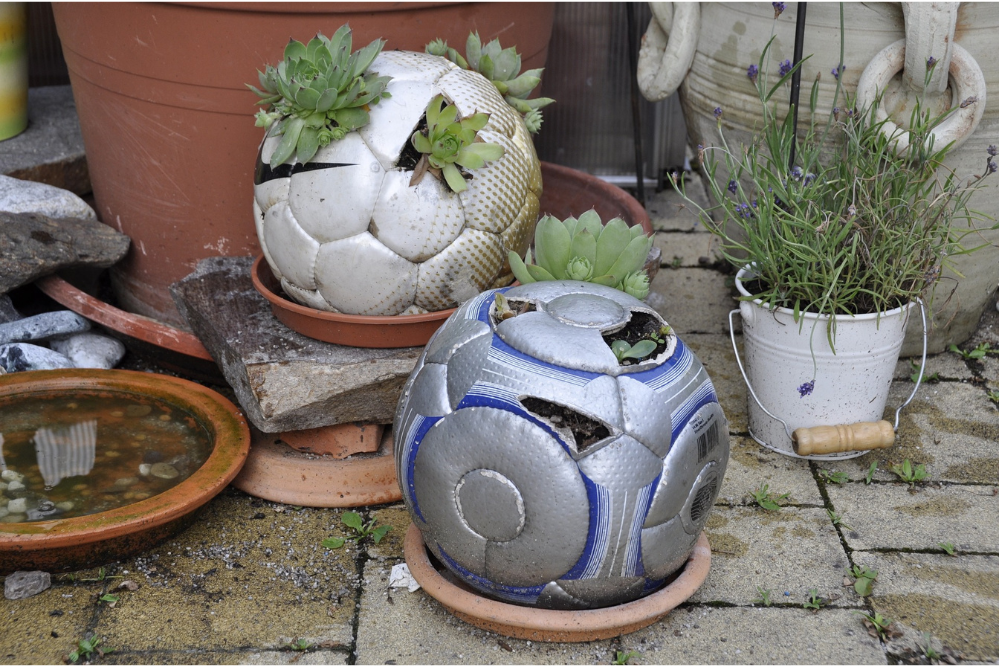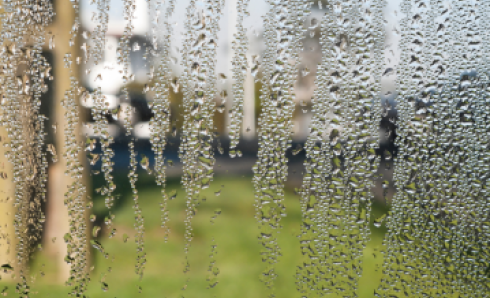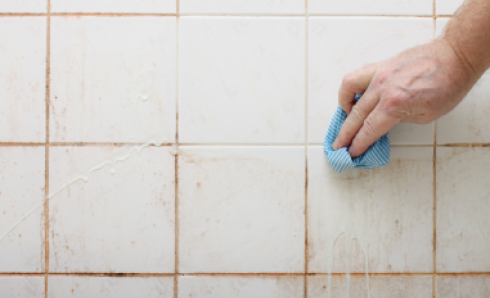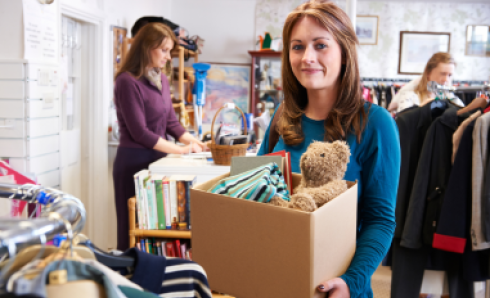Plastic spoons, old car tyres, a discarded cable drum, and a wooden ladder, are unlikely to be the first items that spring to mind when thinking about redecorating your home.
With the cost of living continuing to rise and many looking to make savings wherever they can, upcycling is becoming more popular than ever.
It’s difficult to pinpoint a start to this movement as people have been taking old things and revamping them for as long as anybody can remember. However, what developed into a fashionable trend during the 1990s and early 2000s has now taken on a much more direct purpose with many struggling with day-to-day costs and finding that little bit extra for those new purchases.
1. What is Upcycling?
The term upcycling means giving a new lease of life to an item that may otherwise be destined for the bin. The idea is to actively add value and quality to an item by restoring and re-purposing it.
The 'up' stands for 'upping' its value as opposed to recycling which means to break something down and reuse it for a different purpose, with the result being an item of lesser quality e.g. recycled newspaper becoming napkins or toilet paper.
Upcycling continues to appeal to interior designers all over the world, a growing trend that has been embraced as a whole new approach to interior design – a way of adding character, personalisation, and conversation to pieces that would otherwise have been destined for the scrap heap.
2. When did Upcycling begin?
As we mentioned, upcycling has, in theory, been around for as long as we have, but the term itself is relatively new. It was during the Second World War that we saw the first major surge in upcycling in response to rationing and shortages. Much of this upcycling focused on fashion with old textiles repurposed for new dresses and suits and even old plane parts completely repackaged as jewellery.
Rationing didn’t officially come to an end in Ireland until 1951 and upcycling gradually began to fade away as a newer, brighter future began to emerge. It wasn’t until the 1980s and 1990s that we saw its comeback and the term upcycling, coined by German engineer Reiner Pliz, first appeared in 1994.
However, while there may have been a small minority actively upcycling, the final decades of the 20th Century were personified by materialism-mania that saw cheap products flooding into the west from the east. The first shoots of upcycling had appeared, but it would take a real movement to galvanise the cause.
3. The Upcycle Movement
By the early 21st Century, upcycling was slowly becoming trendy, but what may have started in London’s chic-shabby East End or New York’s Williamsburg, quickly began to catch on around the world.
Lynn Haughton, the founder of The Upcycle Movement, has been upcycling from her base in Dun Laoghaire, South Dublin for the past seven years. She explained to us what it is that makes upcycling so appealing.
"I love going into a home and feeling the character and life of its owner reflected in its interior. For example – I was in a home recently which had beautiful wooden flooring that was made using old pallets. It was lovely to imagine where the pallets may have travelled to and from in their previous life. Perhaps they had shipped cargo right across the world?”
"That’s what I love most about upcycled interior design – each item tells a story as beautiful and as unusual as the finished piece.”
4. How to explore your upcycling side?
If you are someone who loves a bit of character, a personal touch, or a conversation piece in your home, upcycled interiors might well be your new favourite hobby. Isn’t it exciting to see something that you could just as easily chuck in the bin being repurposed into something useful or decorative?
You can be as simple or as complex as you want when it comes to upcycling. From a plastic spoon to a ladder, ViralNova has pulled together ‘30 Brilliant ways to use old stuff you're about to throw away' for inspiration.
Mismatched and painted furniture have become a huge trend lately and furniture painting workshops have been popping up all over the country. There are also plenty of opportunities to take online courses, such as shabby.ie.
Haughton advises anyone to give it a try:
“We all have a ghastly table or chair in the attic or the garage. Why not go and experiment with it? Why not try a bright electric blue or even a blood red and make it a feature piece of furniture? It’s surprising how one upcycled statement piece can lift a whole room.”
Stencilling & decoupage are other techniques that have seen a comeback in a big way. Decoupage is the delicate art of using paper to decorate furniture and add detail to pieces.
Whatever way you decide to dip your toe into upcycled interiors, Haughton’s best advice is to not take it too seriously.
“Whether it's simply painting up your existing dining chairs or even repurposing a dining chair entirely and turning it into a swing in the garden, I recommend having fun. Just give it a go and experiment! By re-thinking what you already have you might surprise yourself with what you come up with.”
5. Upcycling for a better future
If upcycling saw its second heyday in the late 20th Century as a form of chic expression, much of today’s upcycling is driven by a very real need to reduce waste and hopefully help us build a better future.
Statistics on waste usually make for uncomfortable reading - as they should. Worldwide, we produce 2.01 billion tonnes of municipal solid waste each year, while 1.92 million tonnes of textiles waste are dumped with 70% going into landfills and 30% incinerated.
But it’s not simply how much that is being wasted that is shocking. The amount of textile production has more than doubled in just 20 years and in 2014, more than 100 billion single items were produced for the first time. Yes, our population is growing, but nowhere near this speed.
It’s clear that our level of production and consumption is completely unsustainable, which has led to an even greater emphasis on upcycling as a way of easing the burden.
6. Insuring your home
It doesn’t matter what you have in your home, whether it’s all sparkling and new or wonderfully upcycled products that glow with character, it’s essential to feel secure just in case the worst-case scenario occurs.
Home insurance with 123.ie provides you with cover ranging from theft to damage and from alternative accommodation to replacement lock service. We don’t judge what you have in your home, we just insure it, allowing you the peace of mind to get on with that furniture painting course safe in the knowledge that we’ve got your back.





